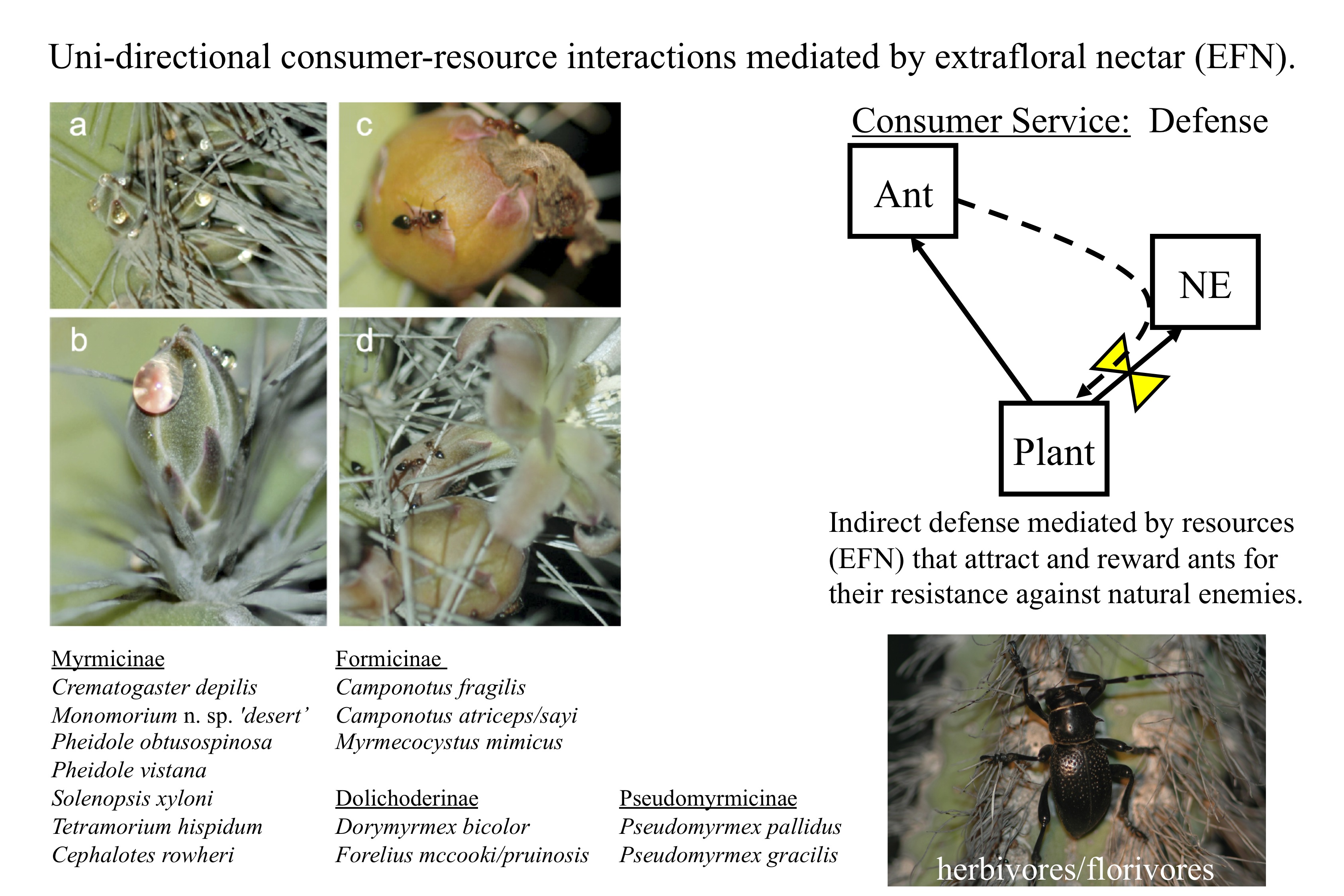Plant-Ant Defense Mutualism
Defense Mutualism between Senita Cacti and Multiple Ant Species
Plant-ant interactions are often mediated by extrafloral nectar (EFN) production by plants, a key food resource which occurs in more than 25% of angiosperm families and >330 plant genera throughout terrestrial ecosystems of the world. Consumer–resource interactions between ants and EFN plants are often mutualistic, as EFN resources serve as an indirect plant defense that attracts and rewards ants (and other arthropods) for their resistance against natural enemies such as herbivores, florivores, pre-dispersal seed predators, and plant competitors. Extension of optimal defense theory for plant secondary compounds to EFN, along with recent meta-analyses of ant effects on plants, is providing ever greater support for the generality of ant-plant defensive mutualisms. While the repeated, convergent evolution of extrafloral nectaries suggests a common function among plant species, alternative hypotheses have been sought to explain the utility of EFN for studies in which ants do not have a strong effect on plant defense. The nutrition hypothesis proposes that, if ants build their nests in or near plants supplying EFN, then nutrients from the nests (e.g. ant debris, waste products) may enhance plant nutrition and performance. The distraction hypothesis proposes that EFN resources divert and satiate ants and other non-pollinating insects away from exploiting floral resources, thereby reducing the disruption of pollination and plant reproduction. While EFN may have evolved for one particular function, EFN may well have an alternative function under current ecological conditions. Moreover, such alternative hypotheses for the function of EFN are not mutually exclusive. I am evaluating these and other aspects of plant-ant interactions using senita cacti and a variety of ant species exploiting their EFN. I am also using plant-ant interactions to examine and test consumer-resource theory for the population ecology and dynamics of mutualism and transitions among outcomes of interspecific interactions.
